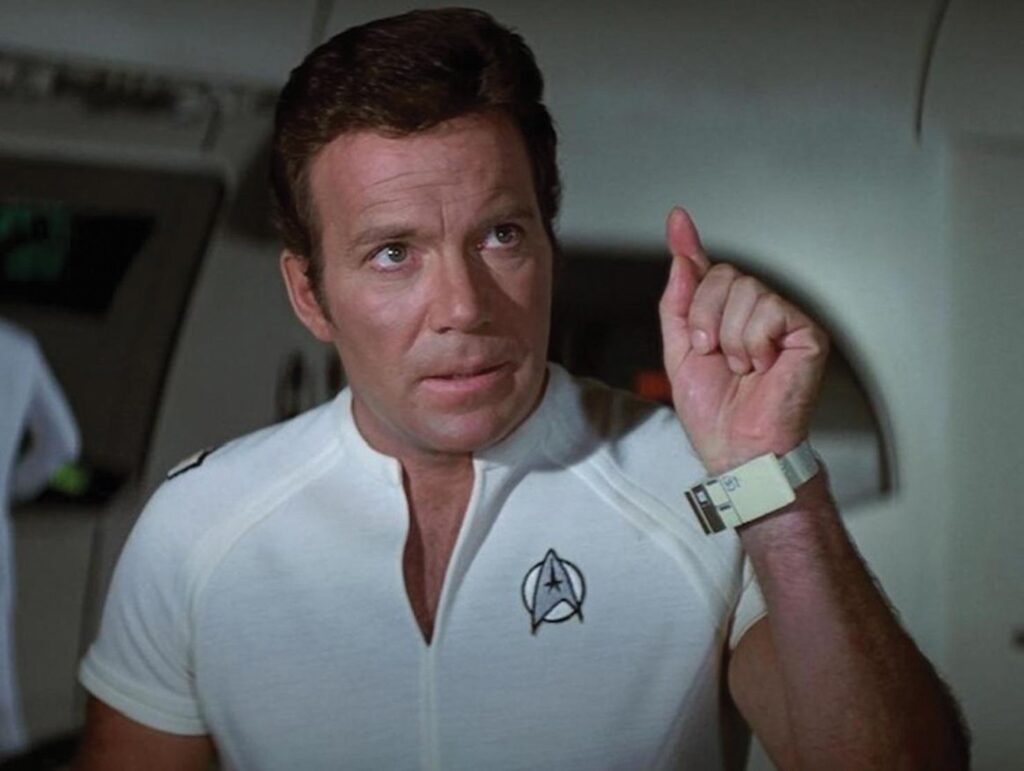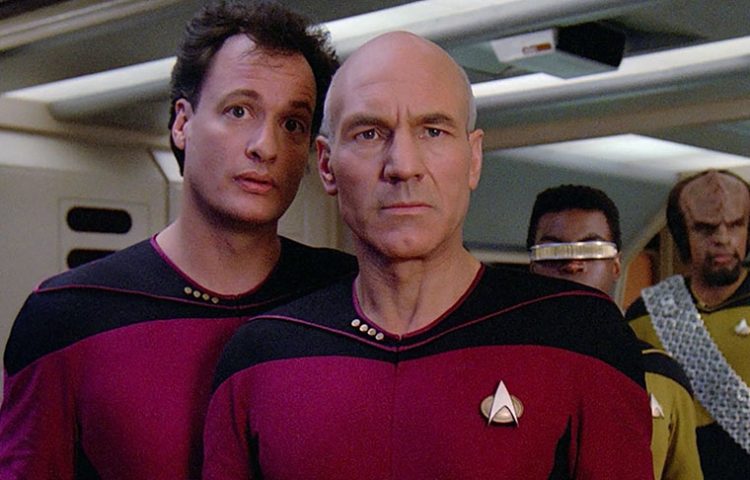How Star Trek Influenced Watchmaking
Wristwatches do not always seem like futuristic technology—depending on the style one wears—but retro-futuristic shows like Star Trek employ their own visions of where “no watches have gone before” (in our best Picard voice). Retro-futurism in Science Fiction (generally) is a subject we’ve covered in our blog previously. It’s a unique way for any franchise to explore how familiar gadgets might take on a new life. From Dick Tracy’s police watch to Lando Calrissian’s android-awakening comm device in The Empire Strikes Back, plenty of historical on-screen wrists have influenced/predicted the technology of the future.

Arguably the most influential series that continues to emboldened this sort of forward-thinking tech is, of course, today’s subject. While the various Treks haven’t always highlighted wrist-bound technology, they’ve influenced modern ideas of how technology should work. The Original Series conceptualized flip phones with its initial comms devices, the Next Generation predicted modern tablets, so it’s likely not surprising that we here at TimesTicking looked into Trek-tech wristwatches. One example stood out to us the most in that regard. In 1979’s Star Trek: The Motion Picture, Captain Kirk’s wrist is well-adorned with predictive futurism. Calling a movie a “motion picture” certainly dates the film but Kirk’s watch is far from old fashioned. In fact, it created a new comms benchmark for the series—and is reflective of modern watch technology.
One to Beam Up
A quick admittance—we understand that the updated wrist communicators in Star Trek: The Motion Picture weren’t technically timepieces. However, coming out a year before Star Wars: The Empire Strikes Back, where Lando Calrissian is pictured with similar technology, Star Trek’s motion picture was really on to something regarding where watches were headed (sorry Star Wars fanboys). With new quartz and digital-watch technology existing around the time of the movie’s release, it was wise to portray a watch working for remote communication. The creative teams that designed the wardrobe for The Motion Picture—as time would tell—essentially stumbled upon their own proto-smartwatch. Ditching the clunkier hand-held comms, the intrepid crew of the Enterprise NCC-1701 went hands-free to much praise (and merchandising). Though other sci-fi and pulp franchises had introduced similar devices prior to this film, its popularity and impact made strong cultural waves.
Engage

Eventually the hands-free aspect of Star Trek’s comms evolved further. When The Next Generation hit the scene, comms became pinned to the Starfleet uniform. It’s highly unlikely that watches will move to a similar position—unless one wears a vest/jacket suited for a pocket watch (which is still often quite fashionable). Mirroring the evolution of watches from pocket watch to wristwatch, the changing of Trek’s comms both inspires futuristic imaginings and hints at past concepts that persist today. Making a phone call, sending a text, ordering food, and such are all easily accessible via simple touch or voice command in our time. With these Trek-esque capabilities, wristwatches have taken on new life in the 21st Century. All one has to do is simply engage their timepiece to interact with the world at large. With all of that in mind, sometimes a sip of Romulan Ale goes down better with a traditional timepiece in tow. Whether one is looking toward the stars—or for something more earthbound—timekeeping’s history will stay its course on its continuing mission—to seek out new tech and embolden civilization—each piece following us into our varied frontiers.
Times Ticking has been in operation for more than 30 years, since 1982. We have performed watch repair for customers both locally and internationally. If it Ticks! We KNOW it! Our team of watch repair technicians have a combined experience in watchmaking of over 120 years.

